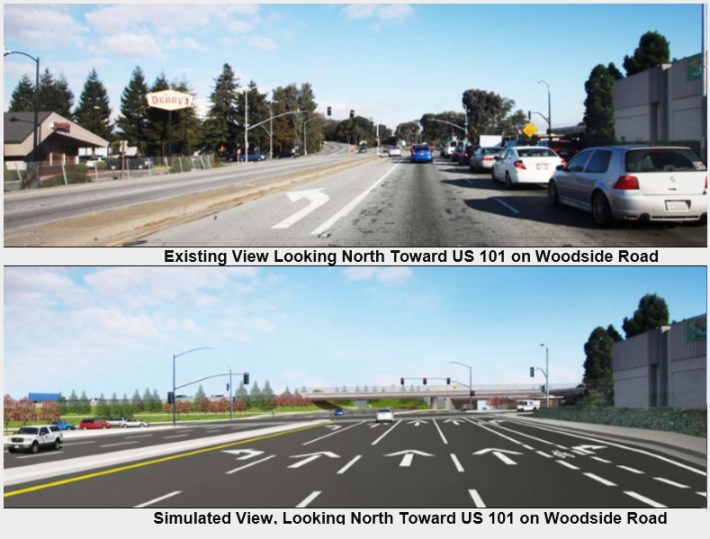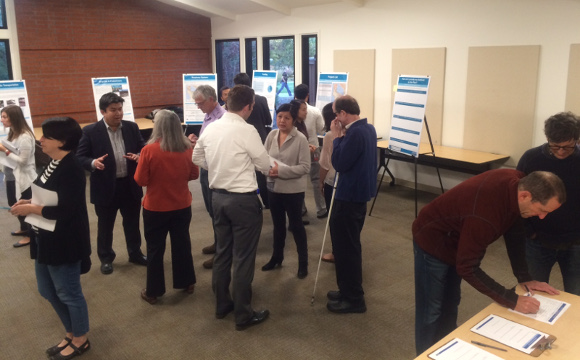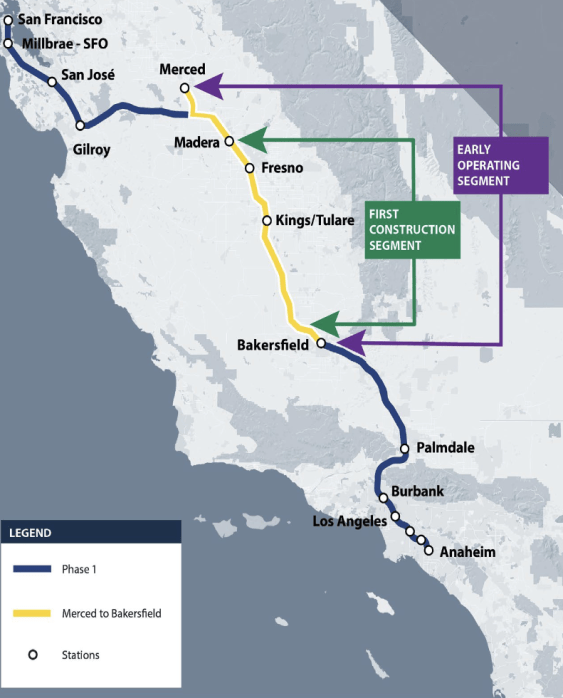San Mateo County Drafts Business As Usual Transportation Plan
5:00 PM PDT on October 4, 2016

Note the 'call to action' at the end of this post.
City/County Association of Governments of San Mateo County (C/CAG) officials unveiled a draft update of the agency's Countywide Transportation Plan [PDF], the first since 2001, at three community meetings last week. The new plan calls for billions of dollars in highway expansion projects [PDF] over the next 25 years while it ignores many potential transit and active transportation upgrades.
A complete draft of the plan was written in early 2016 by C/CAG planners in consultation with staff from other transportation agencies, including Caltrans and the San Mateo County Transportation District (Transportation Authority, Caltrain, SamTrans), prior to taking any public input. The agency hopes to approve a final version as early as December.
The plan’s central mission statement calls for “an economically, environmentally, and socially sustainable transportation system that offers practical travel choices, enhances public health through changes in the built environment," yet proposes a massive expansion of highway traffic capacity for which C/CAG would seek funding through the Metropolitan Transportation Commission (MTC)'s Plan Bay Area 2040.
“While the role of the roadway system is supporting all modes of travel, its role in accommodating individuals driving their own automobile is probably the most essential,” states the plan. “Even with significant new transit investments, the private automobile will remain the dominant mode of travel within San Mateo County in the year 2040.”
C/CAG predicts that 70 percent of all new commuting trips in San Mateo County over the next 25 years will be made by automobile (driving alone and carpooling). Accordingly, most of the infrastructure projects recommended by the plan--to qualify for funding through the regional Plan Bay Area--are highway traffic expansions. Costs for the individual projects are not listed but total several billion dollars.

Like the draft Countywide Transportation Plan, the agency's guiding Congestion Management Program 2015 [PDF], intended to "alleviate and control congestion," also sets no specific goals for reducing vehicle trips or vehicle miles traveled, and notes little change in travel patterns since 2000.
While the plans states that "significant investments in pedestrian and bicycle facilities will enhance safety for non-motorized travel as well as contribute to healthier, more active communities," it proposes no significant investments. Bike/ped improvements are lumped into a single "county-wide implementation of bicycle/pedestrian enhancements" project while 25 separate highway expansion projects are separately listed.
"This isn't a Capital Improvement Program," said C/CAG Programs Manager John Hoang at last Thursday's community meeting in Menlo Park. "These are projects identified by the cities as critical to meet local transportation needs."

The C/CAG transportation plan update does make a number of sound recommendations for San Mateo cities, although the agency has no way to ensure these policies are implemented.
"Most zoning codes require a minimum number of parking spaces," states the plan, for example. "Such requirements have contributed to an asphalt landscape dominated by the automobile and difficult to navigate by foot or bicycle."
And the plan sets modest mode share goals for 2040--15 percent of all trips by walking, 5 percent by bicycle, and 7.5 percent using public transit. However, no goals are set for reducing vehicle miles traveled in the county, and the plan doesn't explain how so many major highway expansions can possibly meet the mandate set by California Senate Bill 32 to cut greenhouse gas emissions by 40 percent by 2030.
The deadline for comments on the San Mateo Countywide Transportation Plan 2040 is October 31, according to the plan's website. The final plan "is expected to be complete in late 2016 or early 2017." No additional public review of the plan has been announced.
Read the draft San Mateo Countywide Transportation Plan 2040 here [PDF].
Call to action:
Send comments to:
C/CAG Programs Manager John Hoang
jhoang@smcgov.org
(650) 363-4105
Stay in touch
Sign up for our free newsletter




